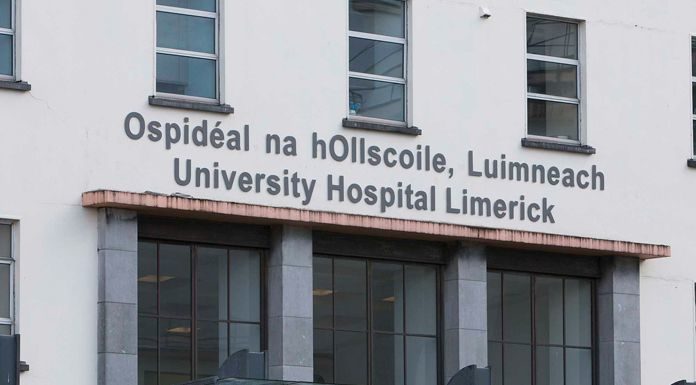A former Chair of the HSE’s Regional Health Forum West says the overcrowding at University Hospital Limerick is totally unacceptable.
It comes as the INMO’s trolleywatch figures reveal that the number of patients seeking admission at University Hospital Limerick has risen by 11 percent year-on-year.
This is despite the national figure for November decreasing by seven percent.
Fianna Fáil’s Tom McNamara spoke to Clare FM’s James Mulhall, saying that the issue lies in changes of the hospital network in 2009:
Statement from the UHL Hospitals Group:
The ED in University Hospital Limerick is one of the busiest in the country with over 64,000 attendances in 2016. UHL has the only ED for the entire MidWest Region serving a population of approximately 385,000 in Limerick, Clare and North Tipperary.
The numbers presenting continues to increase year-on-year and of those presenting, the numbers requiring admission, including many frail elderly patients, has also increased.
There has been an increase of 5.2% in presentations to the ED in the period Jan to Nov 2017 (inclusive) when compared to the same period in 2016. In addition to the increased volumes of frail elderly patients presenting, increased complexity and acuity is also a factor. From May to November 2017, the number of patients admitted to wards at UHL increased by almost 35% compared with the same period in 2016.
Only Model 3 and Model 4 hospitals operate 24/7 emergency departments. Taking the most recent CSO data, this means there is one model 3/model 4 hospital for the 384,998 population (1:384,998) served by UL Hospitals Group compared to five hospitals serving a population of 895,022 (1:179,004) and 709,880 (1: 141,976) in other regions. In relation to the population aged 75 and over, the corresponding ratio is 1:22,553 in UL Hospitals Group; compared to 1:10,616 and 1:9,209 in other regions.
UHL has 400 inpatient beds and this is recognised as not being sufficient for the needs of the MidWest Region. A bid to build an additional 96 bed block on the UHL site has been submitted to the Department of Health and approval has been granted for funding of the design stage of the build.
UL Hospitals Group regrets that any patient has to face long waits in our ED during busy periods and any distress or inconvenience which this causes to patients and their loved ones.
The HSE and UL Hospitals Group recognise the importance of a system wide focus on improving patient experience times, particularly in respect of older persons. To this end the Integrated Care Programme for Older Persons, in conjunction with acute hospitals and respective community-based services, is implementing a comprehensive programme of improvements aimed at increasing hospital avoidance, improved patient pathways, as well as timely and safe discharge for older persons.
The new ED at UHL has designated spaces for 49 patients and admitted patients waiting for a bed are often in single rooms or designated bays. While patients still face delays in the new ED, it provides for a much improved patient experience compared to the old department which had 33 bays and has greatly improved the privacy, safety and dignity of our patients. Patients in the new ED have access to some of the most advanced diagnostics equipment in the country in the department itself.
Among the measures taken to relieve pressure on the ED are: the transfer of suitable patients from UHL to Ennis Hospital, Nenagh Hospital, St John’s Hospital and Croom Orthopaedic Hospital; the opening in September 2017 of a 17-bed short stay unit for medical patients; the transfer of appropriate patients to community care settings; working closely with Community Intervention Teams to provide antibiotics and other basic care in a patient’s home or care facility; communication with GPs to ensure patients are referred to ED only where appropriate; extra ward rounds; and as a last resort, extra beds are put on wards.
A single point of contact for GPs, called the Bed Bureau, has been introduced which helps to stream patients to the correct Hospital department within UL Hospitals Group.
We would also urge people to think about all their care and treatment options and keep ED services for the patients who need them most. For example, many patients with limb injuries can go to an Injury Unit in Ennis, Nenagh or St John’s Hospital. Injury Units are open in Ennis and Nenagh Hospitals from 8am to 8pm, Monday to Sunday and 8am to 6pm Monday to Friday at St. John’s Hospital. Others with a less serious illness can be treated by their GP or out of hours GP service where their GP can refer them to an Assessment Unit the following day if required.
However, if you are seriously injured or ill or are worried your life is at risk the ED will assess and treat you as a priority.








